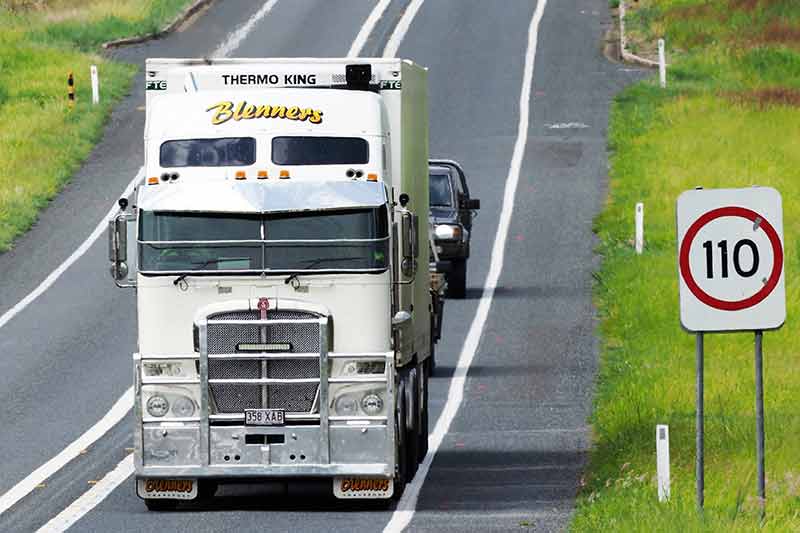
Image credit: CSIRO
Researchers from the Commonwealth Scientific and Industrial
Research Organisation (CSIRO) in Australia have provided
the most detailed map of routes and costings across Australia's entire
agricultural supply chain.
The transport infrastructure moves over 80 million tonnes of
Australian agricultural (including horticultural) output between farms,
storage, processors and to markets each year and costs close to AU$6 billion
annually. Often there are distances of over 1000 km between production,
processing and markets, with transport costs accounting for up to 40 per cent
of the market price.
Infrastructure investment and policy changes can reduce
costs across agricultural enterprises, but before this, it has not been
possible to evaluate the whole system to ensure that infrastructure investment
maximises whole of industry productivity. This new map could potentially save millions
of dollars for the industry annually.
The researchers applied the logistics
tool TraNSIT (Transport Network Strategic Investment Tool) to 98 per cent
of agriculture transport across Australia including commodities such as beef,
sheep, goats, dairy, pigs, poultry, grains, cotton, rice, sugar, stockfeed,
horticultural and even buffalo. The information was presented in the final
TraNSIT agricultural report, released this week. In addition to focusing on
each agricultural commodity, the report also features a flood case study and
rail to road scenarios.
TraNSIT was initially built to model livestock supply chains
in northern Australia in 2012/13 through an initiative by the Office of
Northern Australia and with co-funding from the NT, WA and Queensland
Governments. The tool was originally applied to the beef industry before being
extended to all agriculture transport across Australia.
The TraNSIT tool identifies ways to reduce travel distance
and time, save fuel costs, cut down on wear and tear to vehicles and produce
and minimise stress for both truck drivers and livestock. It works by analysing
every possible combination of transport routes and modes (road and rail) and
determining those that optimise vehicle movements between enterprises in the
agriculture supply chain.
It incorporates factors such as road/rail condition,
temporary closures and diversions and the availability of supporting facilities
such as truck stops and holding yards. It can be used to manage logistics costs
for individual enterprises or whole industries.
The tool currently accommodates 142 million tonnes of
agricultural transport and over 5 million vehicle movements and 15,000 rail
trips per year. This includes the transportation of cattle as well as grains,
dairy, poultry, rice, cotton, pigs, sugar, horticulture crops and stock
feed. Forestry and sheep will be added in the near future. The
tool considers transport from farms to storage, feedlots, processing,
export ports, as well as domestic supply chains to distribution centers and
retailers.
The first project under the AU$100 million Beef Roads
program will be the sealing of 17km of the Clermont to Alpha Road in Central
Queensland, which is due to start early next year. The AU$8m works will improve
road safety and access for oversize vehicles while reducing freight and
maintenance costs.
CSIRO's TraNSIT project leader, Dr. Andrew Higgins, said, "Farmers
will be saving money on transport as well as being able to deliver food to the
market faster and with less damage and disruption. We expect these savings will
eventually be passed onto the consumers."
Case studies
For the final report,several case studies were identified by industry and government, representing
TraNSIT's diversity of applications across Australia.
For example, researchers evaluated the impact of road
closures and detours on the transport of valuable crops and livestock in Forbes
in Central West NSW. The Forbes area is a diverse agricultural region of grain
production, beef cattle, poultry, dairy and pigs.
From early-September to mid-October 2016 severe rainfall
caused extensive road closures throughout NSW with Forbes becoming particularly
isolated. There was about a AU$2m
increase in transport costs created by the short term and long term road
closures from this flooding event, and about another 500 vehicle trips that
could not occur as there was no alternative routes. The cost would have been
even greater if the floods had occurred during harvest season where more cotton
and grain are being transported in large volumes on the roads.
Using TraNSIT, researchers can analyse several ways to
reduce the economic impact of floods in country regions and throughout
Australia including upgrading or raising particular bridges to reduce the
frequency of closures from flooding. This will in turn reduce the occurrences
where cattle or harvested crops cannot reach their market.
Researchers also looked at the impact of hypothetically
shifting all agriculture (grains, beef, sugar, cotton) that currently use rail
to be road only.
Grains were more expensive ($208m) when transported by road
while cattle (or beef) was much less expensive (about 70 per cent less). These
differences were primarily due to rail wagon capacity versus semi-trailer
capacity.
Further applications of TraNSIT
TraNSIT could be
used for wide range of further applications including:
- testing potential outcomes for changes in
regulation: driver fatigue, animal regulation, biosecurity - upgrading of transport infrastructure to increase accessibility towards the wet season
- upgrade of road sections and bridges to allow higher productivity vehicles
- sealing or widening of roads segments
- improvements to rail track infrastructure
- new road links, bypasses or freight hubs
- capacity for industry organisations to optimise their own supply chains
- using TraNSIT as a predicative tool in regard to road conditions and weather forecasts
- forecasting future freight flows under different production and climate scenarios
- agriculture logistics in developing countries.
TraNSIT is now being applied overseas, particularly in
Indonesia, Laos and Vietnam to address supply chain inefficiencies and
cross-border bottlenecks.
More information on TraNSIT and the final agricultural report is available here.
















